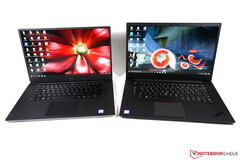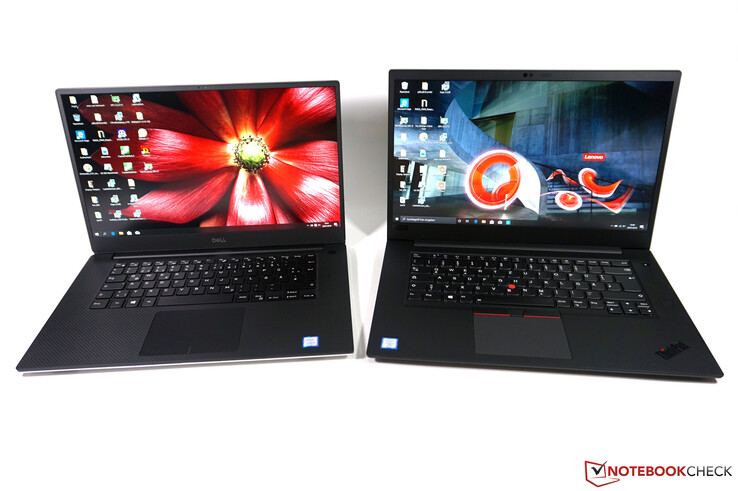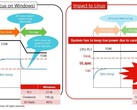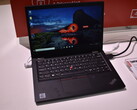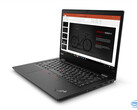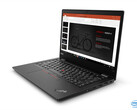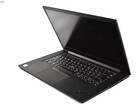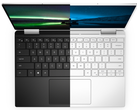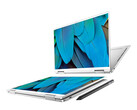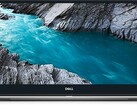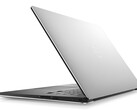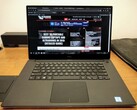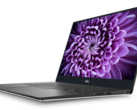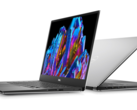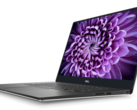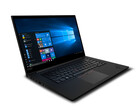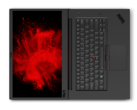It is an interesting battle in the segment of 15.6-inch multimedia laptops. HP does not offer a successor for its EliteBook 1050 G1, so we are primarily interested in the comparison between the Dell XPS 15 7590 and the Lenovo ThinkPad X1 Extreme 2019 (or their workstation counterparts Dell Precision 5540 and ThinkPad P1 Gen2, respectively).
We are currently reviewing the new XPS 15 7590 and the ThinkPad P1 2019, both equipped with a matte 1080p screen. It is the default screen option on the XPS 15, but it is an optional 500 Nits HDR screen on the P1 2019. The following table summarizes the specs of the models, but we will also review other SKUs soon.
| Dell XPS 15 7590 Entry | Lenovo ThinkPad P1 2019 20QT000RGE | |
|---|---|---|
| CPU | Intel Core i5-9300H | Intel Core i7-9850H |
| GPU | Intel UHD Graphics 630 | Nvidia Quadro T1000 |
| RAM | 8 GB DDR4-2666 | 16 GB DDR4-2666 |
| SSD | 512 GB PCIe-NVMe | 512 GB PCIe-NVMe |
| Display | 15.6-inch FHD, 1920x1080 pixels, matte | 15.6-inch FHD, 1920x1080 pixels, matte |
| Price | 1399 Euros | 2399 Euros |
Case - XPS 15 is more compact, but heavier
The cases of the two models have not changed, but a direct comparison is still interesting. The XPS 15 7590 has a smaller footprint, while the ThinkPad P1 2019 is about 200 grams lighter, despite the additional dedicated graphics card. The build quality/stability is great on both machines. The Lenovo looks a bit more restrained with its dark design, the Dell is a bit more noble with its silver lid. However, this is obviously a matter of taste.
Displays - Two very good 1080p screens
Both review units are equipped with matte 1080p screens. The Dell XPS 15 7590 uses a panel from Sharp, while the Lenovo ThinkPad P1 2019 is equipped with a panel from Innolux (even though Lenovo uses multiple vendors for their displays). Both panels are supposed to reach 500 nits; Dell uses this panel by default, Lenovo only offers it as an option (default is a 300 nits panel).
Both screens are very good subjectively and we believe they will be very popular among customers. The Full-HD resolution is still sufficient for many usage scenarios and there are some positive aspects like the lack of scaling issues, matte surfaces, and improved power consumption/battery life compared to 4K or even OLED alternatives.
The measurements of both models are also very good: Both manage average luminance results above 500 nits in combination with high contrast ratios. However, the panel in the XPS 15 has the slight edge in terms of maximum luminance and color gamut. There is also a major difference when we look at the brightness levels. While the ThinkPad P1 2019 reduces the luminance very quickly (150 nits @ 80%), the brightness reduction is more linear on the XPS 15 (150 nits @ 25%). This brings us to one problem of the XPS 15 though, because there is PWM flickering at a brightness of 25% or lower. The frequency is comparatively high at 1020 Hz, but you will often use the affected brightness levels in darker environments, so the flickering might be an issue over longer periods. The ThinkPad P1 also has another advantage in darker environments thanks to its lower minimum luminance (10 vs. 28.2 nits), which is noticeable.
| Dell XPS 15 7590 i5 iGPU FHD LQ156M1, 1920x1080 | Lenovo ThinkPad P1 2019-20QT000RGE N156HCE-GN1, 1920x1080 | |
|---|---|---|
| Display | ||
| Display P3 Coverage (%) | 66.5 | 62.4 |
| sRGB Coverage (%) | 98 | 91.5 |
| AdobeRGB 1998 Coverage (%) | 68.4 | 63.4 |
| Response Times | ||
| Response Time Grey 50% / Grey 80% * (ms) | 52.8 ? | 34.4 ? |
| Response Time Black / White * (ms) | 32 ? | 14 ? |
| PWM Frequency (Hz) | 1020 ? | 26040 ? |
| Screen | ||
| Brightness middle (cd/m²) | 588 | 542 |
| Brightness (cd/m²) | 555 | 528 |
| Brightness Distribution (%) | 89 | 84 |
| Black Level * (cd/m²) | 0.4 | 0.41 |
| Contrast (:1) | 1470 | 1322 |
| Colorchecker dE 2000 * | 2.5 | 3.5 |
| Colorchecker dE 2000 max. * | 6.3 | 7.8 |
| Colorchecker dE 2000 calibrated * | 0.6 | 1.3 |
| Greyscale dE 2000 * | 4.5 | 4.8 |
| Gamma | 2.2 100% | 2.33 94% |
| CCT | 6836 95% | 7690 85% |
| Color Space (Percent of AdobeRGB 1998) (%) | 63.2 | 58.8 |
| Color Space (Percent of sRGB) (%) | 98 | 91.1 |
| Total Average (Program / Settings) |
* ... smaller is better
Battery Life
We can only give you our first results for the Dell XPS 15 7590 at this time. It lasts more than 14 hours in our WLAN test at an adjusted luminance of 150 nits, even though the predecessor lasted a bit longer. This is still an excellent result and the optional OLED screen in particular should consume much more power. We also expect shorter battery life for the Lenovo ThinkPad P1 2019 due to the smaller battery capacity (80 Wh vs. 97 Wh). We included both 2018 versions of the ThinkPad P1 (FHD & 4K) for reference.
| Dell XPS 15 7590 i5 iGPU FHD 97 Wh, 1920x1080 | Lenovo ThinkPad P1 2019-20QT000RGE 80 Wh, 1920x1080 | Dell XPS 15 2018 i5 FHD 97Wh 97 Wh, 1920x1080 | Dell XPS 15 9570 i7 UHD 97 Wh, 3840x2160 | Lenovo ThinkPad X1 Extreme-20MF000RGE 80 Wh, 1920x1080 | Lenovo ThinkPad X1 Extreme-20MF000XGE 80 Wh, 3840x2160 | |
|---|---|---|---|---|---|---|
| Battery runtime | ||||||
| WiFi v1.3 (h) | 14.1 | 8.9 | 15.7 | 9.6 | 9.4 | 6.4 |
| Witcher 3 ultra (h) | 1 | 1 | 1.1 |




